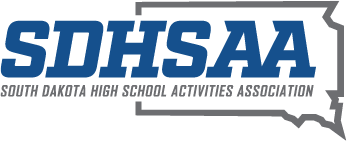2024-25 South Dakota Changes, Clarifications & Reminders
- Indoor play policy: Consolation Round matches will play 8-game pro-sets with a 7-point tiebreak when score reaches 8-8.
- Lineups: Athletes shall be placed in the lineup beginning with Singles Flight #1 and working your way down without skipping flights. The format shall be used when placing doubles teams.
- Substitutions may be made after the entries are submitted and prior to his/her first match of the tournament. The substitution must be based on illness, injury or school administration discipline. A written statement must be presented to the meet director prior to competition. If this is not possible, the substitution will be at the discretion of the meet director. The substitute designated to replace his/her teammate will do so in the same position as the person withdrawing from the tournament. Any substitution(s) in singles competition would have to be a player(s) not already seeded or drawn into the singles competition. Likewise, any substitute(s) in doubles competition would have to be a player(s) not already seeded or drawn into doubles competition. Coaches would not be allowed to switch their line-up to accommodate the substitution. There would not be a re-drawing or re-seeding of that flight, unless it can be done in advance of the seed meeting.
- Substitutions may be made after tournament play has begun for injury or illness. The substitute cannot be a player who has already played in singles/doubles tournament. If a player withdraws, it must be by consent of trainer, meet director and/or SDHSAA meet official. Once a player has withdrawn and been replaced with a substitute, the replaced player is no longer eligible to compete in singles or doubles.
- Change the match format of the State Tournament to play best-of-3 sets with a match tiebreak in lieu of the final set for all championship round matches.
- Tennis will be aligned with two classes. Classes will be divided equally by the total number of teams competing, based on ADM, with the odd number moving up to Class AA. Board of Directors will grant permission to any school wishing to participate in a higher classification than their ADM places them.
- Allow for a substitution for a singles player after the tournament has begun, much like we do in doubles, for injury or illness occurring. This cannot be a player who has already played singles in the tournament. If the player withdraws, it must be by consent of the trainer, meet director and/or SDHSAA meet official. Once that player has withdrawn, they are no longer eligible to compete in singles or doubles.
- For seeding purposes, the match begins when the first serve of the match takes place.
- During regular season, the host school will have the option to play short sets as a match format.
- Matches may be played using a 10-game pro set with a seven-point tiebreak when players reach nine, all with no ad scoring.
- Allow “between point coaching” with the understanding that the coach must be outside the fence on the same side of the court as their players when coaching. Coaching must not disrupt the opponent or the flow of the match. Players may not go to the fence for coaching during this time.
- Tie-Breaking Procedure:
- Head-to-head
- Indirect wins – common opponents with players involved in tie
- Quality wins – any player who has a win versus a higher-seeded player; if they both do, the seed will be awarded to whomever has the best (highest) quality win.
- Bad losses – whoever lost to the lowest-seeded player would receive the lower seed
- Coin flip
- Teams must follow the below Heat Acclimatization and Contact Restrictions:
- Days one through five of the heat acclimatization period consist of the first five days of formal practice. During this time, athletes may not participate in more than one practice per day.
- If a practice is interrupted by inclement weather or heat restrictions, the practice should recommence once conditions are deemed safe. Total practice time should not exceed three hours in any one day.
- Beginning no earlier than day six, and continuing through day 14 or the first varsity contest, double-practice days must be followed by a single-practice day. When a double-practice day is followed by a rest day, another double-practice day is permitted after the rest day.
- On a double-practice day, neither practice should exceed three hours in duration, and student-athletes should not participate in more than five total hours of practice. Warm-up, stretching, cool-down, walkthrough, conditioning, and weight room activities are included as part of the practice time. The two practices should be separated by at least three continuous hours in a cool environment.
- Because the risk of exertional heat illnesses during the preseason heat acclimatization period is high, we strongly recommend that an athletic trainer be onsite before, during, and after all practices.
- NOTES
- Consideration should also be taken for any practices conducted in hot and humid weather in non-air cooled facilities.
- Consult the Heat Index Lookup for more information at https://www.sdhsaa.com/heat-index.
- Days are calculated inclusive of Sundays/weekends.







